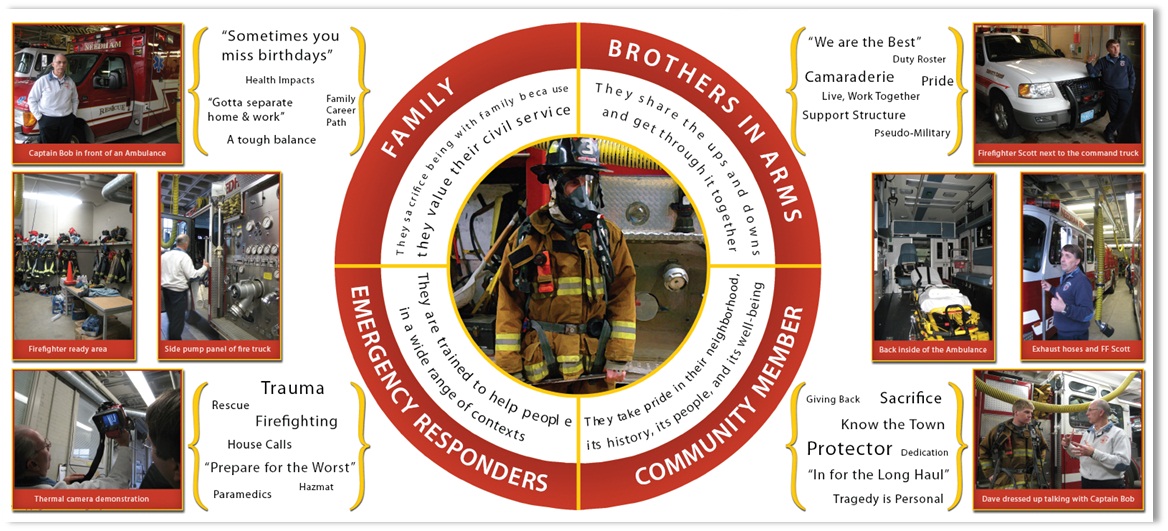

As part of a small team in a course titled User-Oriented Collaborative Design, I work on the design and building of a prototype for a concept we called IVAN, an Integrated Visual Alarm Network concept for firefighters in emergency response situations. Through close interactions with firefighters, we worked to identify areas of design opportunity, synthesized personas, and incorporated needs and values into a final prototype.
Understanding Life in the Station
As part of a team, worked towards a clear understanding of firefighters by converting insights from user visits into clear user portraits. This ability to empathize with firefighters was critical to shaping our idea selection and refinement stages later in the design process.
Targeted Concept Selection and Filtering
After applying various idea generation tools and approaches, created a spectrum of mundane to ‘blue sky’ concepts for improving the life of a firefighter. Through the use of tools such as personas and identified areas of opportunity, narrowed hundreds of ideas to a few concepts to improve and refine with the help of firefighters.
Mapping Interaction Sequences
Final visual alarm concept involved integration of various display systems in station environment, captured through the use of interaction maps and scenarios for dispatch, station primary and secondary displays, as well as truck displays.
Shaping Visual Product Representations
The complexity that went into each sub-system of the IVAN product resulted in various levels of physical and digital visual prototypes to communicate functionality and use of the different systems. In the end, a partially function setup with several displays could demonstrate the functionality and use cases of the whole IVAN interaction map, starting from dispatch and flowing through to primary and secondary station displays, and finally on the trucks leading to the scene of the incident, all the while providing any relevant updates or information changes across the relevant displays.